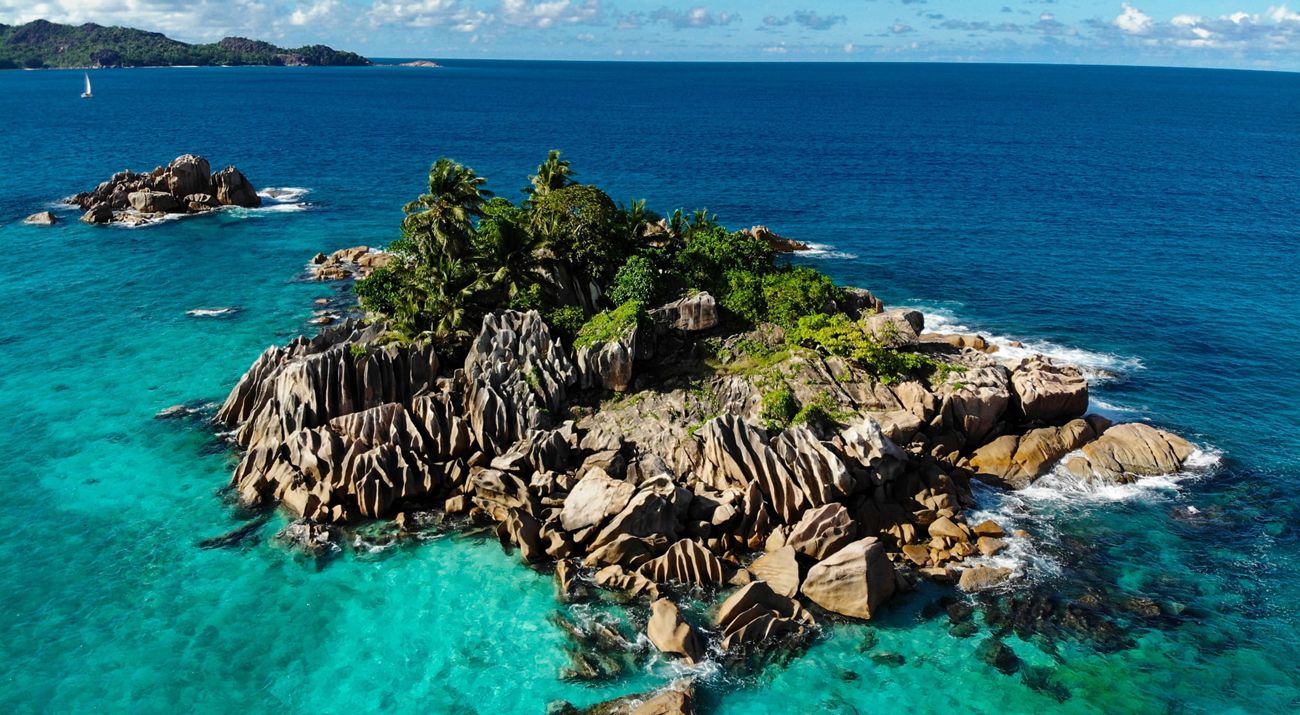
Innovation Drives Seychelles Blue Economy Approach
By Maria Damanaki and Karin Erika Kemper
Maria Damanaki is the Global Managing Director, Oceans, The Nature Conservancy. Karin Erika Kemper is the Senior Director for the Environment and Natural Resources Global Practice, The World Bank.
Our oceans provide everything from food for billions around the world, to protecting communities and economies from storms—bringing it at least $1.5 trillion to the global economy every year. But they also face a barrage of threats, from marine pollution and dwindling fish stocks, to the dramatic effect of climate change on coastal communities. Such challenges require new ways of thinking and innovative financing tools that address both the health and economic wealth of our oceans.
Seychelles is a good example of a country that is going beyond business as usual when it comes to preserving its natural assets. In 2016, the Seychelles completed an innovative debt-for-nature conversion with The Nature Conservancy. This deal raised funding to buy $21 million of Seychelles’ sovereign debt to refinance it under more favorable terms, and then direct a portion of repayments to fund climate change adaptation, sustainable fisheries, and marine conservation projects—as well as to create an endowment for the benefit of future generations of Seychellois.
As part of the deal, the Seychelles committed to a comprehensive Marine Spatial Plan (MSP), which will cover their entire marine area of almost 1.4 million square kilometers. Here, the government is demonstrating its global ocean leadership credentials, driving an ambitious agenda to capture sustainable value from its ocean while also securing 30% (410,000 sq km) of its ocean area in new Marine Protected Areas (MPAs).
Late last month, on the sidelines of a conference co-hosted by the World Bank and the Seychelles on sustainable and climate-resilient ocean economies in Africa, the Seychelles government announced it had completed the first phase of the MSP. The government also announced the creation of two new MPAs (Aldabra Group Marine National Park and Amirantes to Fortune Bank Area of Outstanding Natural Beauty), covering 210,000 sq km, or 16% of their ocean, which will now be fully or significantly safeguarded to encourage sustainable development and adaptation to the effects of climate change.
The Republic of Seychelles is also leading the way with other innovative financing tools, including the world’s first blue bond. With the support of the World Bank and the GEF, the blue bond is currently under preparation with a proportion of the $15 million proceeds to be co-managed by the Seychelles Conservation and Climate Adaptation Trust (SeyCCAT) to boost support for Seychelles’ Blue Economy, including by implementing the MPA. It is a model that can be replicated across small islands and other coastal countries.
As an island nation that depends almost entirely on its ocean, Seychelles is a global biodiversity hotspot containing 115 islands in the Western Indian Ocean, about 1,600 kilometers off the coast of East Africa. Its “Blue Economy” is currently based primarily on fishing and tourism, which, along with its low-lying island geography, makes its people and economy particularly vulnerable to the threats of climate change. That’s why a Marine Spatial Plan is so important.
Climate change creates warmer sea surface temperatures, and warmer temperatures cause sea level rise. It is uncertain how marine ecosystems will be affected, but we do know that distribution patterns of species are changing and some species, like corals, are not recovering from extreme warm water events that happened 20 years ago.
The MSP is designed to protect Seychelles’ ecological assets while also allowing its Blue Economy to develop sustainably. The Plan provides the management direction and considerations around what human activities are allowed in the new protected areas. The development of a governance and implementation framework for the MSP will be developed over the next year to ensure that these areas are effectively and equitably managed.
To get local buy-in, more than 100 stakeholders were consulted during the preparation of Phase 1 of the MSP, and their views on where and which activities—from fishing, shipping and petroleum exploration to tourism, and scientific research—were allowed, to form the backbone of the Plan. The planning process included 25 committee meetings, nine public workshops, and at least 60 consultations with marine sectors, local experts, and agencies.
This first phase of their new MSP puts the Government of Seychelles way ahead of international targets outlined in Sustainable Development Goal (SDG) 14—Life Below Water—which calls for countries to protect at least 10 percent of coastal and marine areas ‘consistent with national and international law and based on the best available scientific information.
With the creation of Phase 1 of this MSP and the designation of these two new marine protected areas, the government and the people of Seychelles are demonstrating that strong growth and strong ocean protection are not mutually exclusive – in the face of a changing climate, they are both essential.
Originally Posted on The World Bank
March 23, 2018
View Original

